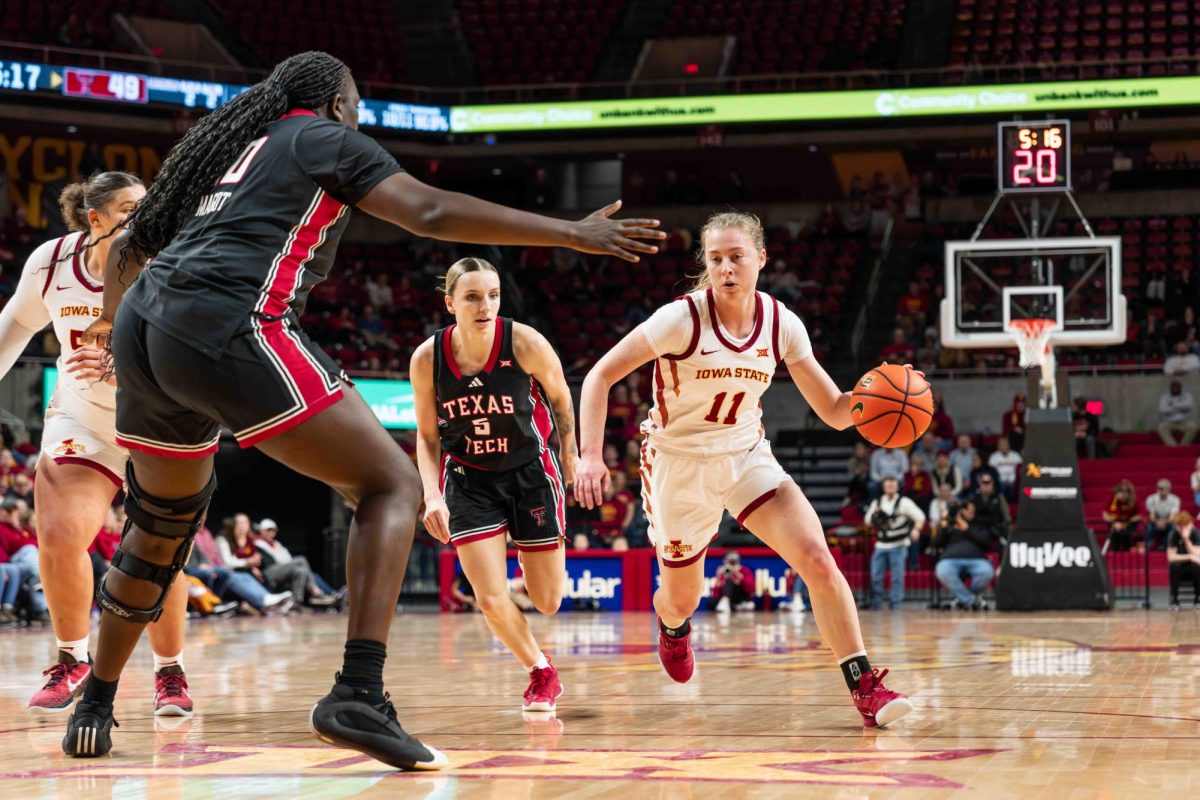One of the following words is not like the others: running, swimming, biking and analytics.
Normally, analytics wouldn’t fit in with the activities that make up a triathlon.
With the Triathlon Club at Iowa State, however, it fits perfectly. The club has made a big stride incorporating analytics into its training in order to get maximum results while competing and training.
Lincoln Eppard has taken the analytics side of triathlon training to the next level. Eppard, a senior, is currently doing a co-op in Rochester, Minn., with International Business Machines Corp. for the fall semester. This has bolstered his usage of analytics, including in his participation in triathlon.
That’s where Eppard really picked up on the idea of using analytics to track his training. He realized financial concepts of reducing the risk or variance of an investment portfolio coincided with the idea of minimizing the chances of injury during training.
In order to track the training data, Eppard used a Garmin to stream heart rate, cadence, speed and power output. He then used data mining software to create a profile of what output levels his body could sustain over particular time intervals.
“The data tells me how hard I can push myself and lets me know when I have peaked,” Eppard said. “It’s a great tool to prevent injuries and with it, I have yet to over-push myself and cause injury.”
Eppard was recently training for the triathlon conference championships and was able to see that his body was working too hard to maintain a healthy pace for continuous running, as his heart rate was 10-15 beats per minute higher than usual.
The increase in heart rate could have been because of numerous factors such as a lack of sleep, caffeine or stress.
“By acknowledging this, athletes can make adjustments to their workouts on the fly,” Eppard said. “Instead of forcing my body through a workout it wasn’t ready for, I was able to trim the workout.”
Using the analytics from the data is only helpful when an athlete actually has the equipment, which isn’t always the case since it sells for a little more than $200. Other equipment is available that tracks the power output an athlete uses while peddling on a bike.
“When you don’t have the equipment, you have to go off feel and know when and where to ease up,” said Emily Epperson, president of the Triathlon Club. “It’s definitely nice to know your pace and peak points.”
The biggest reason athletes use the data for training is to prevent injury. When they can see they aren’t performing at a normal output, the athletes can alter the training regimen. If the athlete’s heart rate is lower than usual during races, he or she knows more effort can be exerted.
Eppard’s lone setback was when he suffered a seizure three weeks ago. The seizure prevented him from racing in the CyMan triathlon the club hosts. He said companies are developing tools to help prevent incidents like that from happening. Eppard was back on his feet a few days later and continued his training.
“People are often frightened away because others make it to be a complex science of software and mathematics, when in reality, it’s truly more of an art,” Eppard said. “You have your colors, the data, your paintbrush, the software, and your canvas can be whatever problem, riddle or industry you’re passionate enough to get your hands dirty with.”







